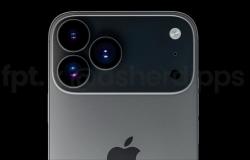The relationship between the doctor and the patient is changing with the arrival of artificial intelligence (AI) and Big Data. Far from replacing human interaction, these technologies are contributing to humanize it. Thanks to advanced data processing systems and intelligent medical records, doctors can free themselves from bureaucratic tasks and concentrate on the essentials: listen, understand and accompany their patients. This change not only improves the patient’s experience, but also favors adherence to treatments, by strengthening trust and communication.
This is the case of the Scribe project, of the Quirónsalud group, an initiative that evolves traditional health care in Spain towards a New model focused on the humanization of attention. This approach-which has progressively implemented in the 50 hospitals of the group and there are already more than 4,000 doctors, having made more than 400,000 consultations-prioritizes the medical-patient relationship, eliminating technological distractions and administrative procedures so that professionals can focus exclusively on the patient. The objective, in fact, is that it can be used in all medical specialties.
“Doctors allows us to remove the attention from the screen and the keyboard, so that, in addition to optimizing time, we take the opportunity to focus more on physical examination and solve the patient’s concerns. In addition, this perceives a better quality in care when feeling more attended and heard during the consultation,” explains Dr. Ovid Baena OlascoagaSpecialist at the Traumatology Service of the Quirónsalud Miguel Domínguez (Pontevedra) Hospital.
How does Scribe work? Thanks to generative artificial intelligence, The transcription and interpretation of the conversation is automated in consultationregistering only the relevant information in the medical history and guiding the doctor during the appointment. The doctor explores the patient, indicates tests or treatments and, after reviewing the suggestions, validates or adjusts the data. This optimizes time, improves the quality of medical reports and facilitates their understanding for patients and family.
“In addition to carrying out the automatic transcription of the conversation between doctor and patient, it also interprets and identifies the key points, which will be scored in the medical history. From the conversation, Scribe It also suggests explorations, benefits and prescriptions. And an important advantage is that the data is turning in the corresponding fields, which in the future will allow a better analysis of the cases, ”adds Dr. Jordi Roura OnaindiaHead of the General Surgery Service and Digestive System of the General University Hospital of Catalonia, who emphasizes that he can now talk fluently with patients, look them in the eye and focus on them without having to be aware of writing down the data. “This has strengthened the medical-patient relationship. Many of them complain that the doctor does not separate the eyes from the screen and now express me that they feel truly heard”, dice.
Advantages for the doctor and the patient
This new model not only improves the patient’s experience, but also that of the doctor, allowing him to focus on the essential. Unlike the traditional system, the patient self -admissions and access directly to the consultation without going through the waiting room. Once inside, the specialist reviews his history and, if necessary, share the results of the tests, promoting transparency and collaboration in his clinical process. In fact, 90% of patients have shown a high degree of satisfaction thanks to scribefor the greater closeness with the doctor and the agility in the care it receives.
“I compare it with the passage from paper to the computer: at first it seemed more complex, but now returning to the paper is difficult. The same will occur, since, once accustomed, it will cost to return to the traditional model. In fact, I find it more comfortable, not only to avoid writing, but because of the greater closeness with the patient,” says Roura Onaindia.
In his opinion as a general surgeon and the digestive system, it is not known if it will be possible to avoid the use of screens in the consultations, since at certain times it will be necessary to resort to a PC to access applications that are not available in the tablet of Scribe, as calendars, anatomical schemes or explanatory images. “What is certain is that The relationship with the screen will change and will only be used shared with the patient to enrich explanations and improve the understanding of pathologies”.
El Dr. Ovid Baena It also considers that this technology, in addition to facilitating closer attention, is useful for its specialty. “I am in the process of learning, but I trust that it will be more useful as we dominate all its functionalities. It is a necessary step to take advantage of this technological advance, which is already part of our daily life and can also benefit the field of health.”
Although the main scribe model application scenario focuses on the outpatient field of consultations, It also has application in other hospital scenarios And the objective is that it can be used in the future in all medical specialties.
When this model is globally implanted, experts say that physical barriers will be finally broken to accompany patients throughout the process in a more human way.






